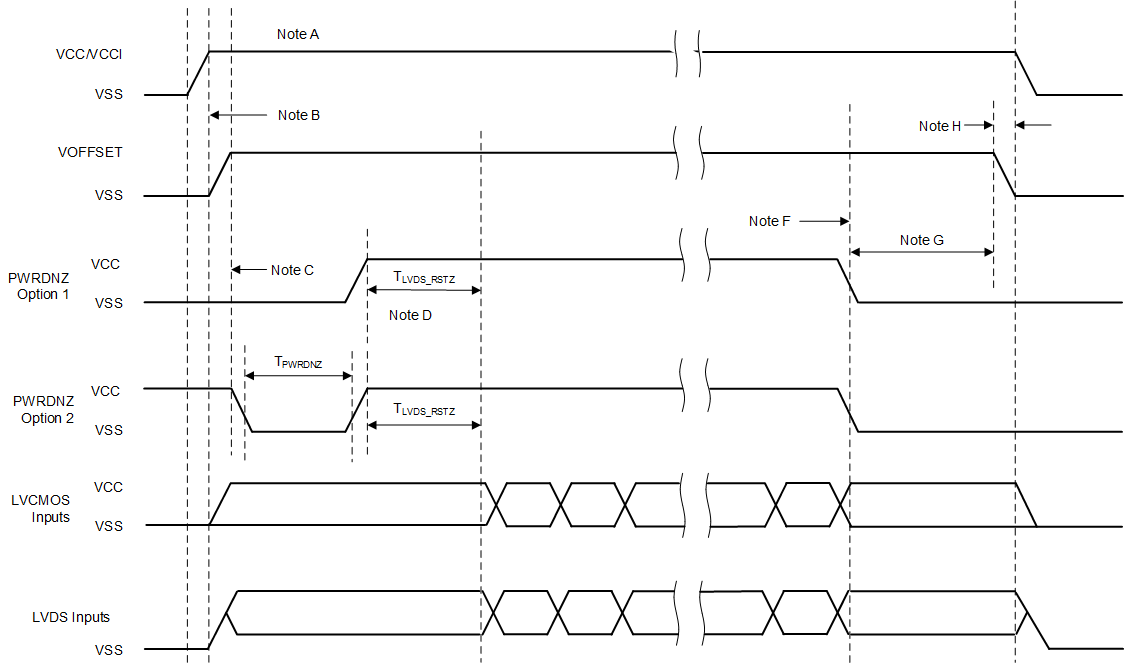JAJSKY2B November 2017 – November 2024 DLP650LE
PRODUCTION DATA
- 1
- 1 特長
- 2 アプリケーション
- 3 概要
- 4 Pin Configuration and Functions
-
5 Specifications
- 5.1 Absolute Maximum Ratings
- 5.2 Storage Conditions
- 5.3 ESD Ratings
- 5.4 Recommended Operating Conditions
- 5.5 Thermal Information
- 5.6 Electrical Characteristics
- 5.7 Capacitance at Recommended Operating Conditions
- 5.8 Timing Requirements
- 5.9 Window Characteristics
- 5.10 System Mounting Interface Loads
- 5.11 Micromirror Array Physical Characteristics
- 5.12 Micromirror Array Optical Characteristics
- 5.13 Chipset Component Usage Specification
- 6 Detailed Description
- 7 Application and Implementation
- 8 Power Supply Recommendations
- 9 Device and Documentation Support
- 10Revision History
- 11Mechanical, Packaging, and Orderable Information
8.2 DMD Power Supply Power-Down Procedure
- During power-down, VCC and VCCI must be supplied until after VOFFSET are discharged to within the specified limit of ground. Refer to Section 5.4.
- Power supply slew rates during power-down are flexible, provided that the transient voltage levels follow the requirements specified in Section 5.1 and Section 5.4.
- During power-down, LVCMOS input pins must be less than specified in Section 5.4.

A. See Pin Configuration and
Functions for pin functions.
B. VCC must be up and
stable prior to VOFFSET powering up.
C. PWRDNZ has two turn on options.
Option 1: PWRDNZ does not go high until VCC and VOFFSET
are up and stable, or Option 2: PWRDNZ must be pulsed low for a minimum of
TPWRDNZ, or 10ns after VCC and VOFFSET are
up and stable.
D. There is a minimum of
TLVDS_ARSTZ, or 2μs, wait time from PWRDNZ going high for the
LVDS receiver to recover.
E. After the DMD micromirror park
sequence is complete, the DLP controller software initiates a hardware
power-down that activates the PWRDNZ and disables VOFFSET.
F. Under power-loss conditions,
where emergency DMD micromirror park procedures are being enacted by the DLP
controller hardware, PWRDNZ goes low.
G. VCC must remain high
until after VOFFSET goes low.
H. To prevent excess current, the supply
voltage delta |VCCI – VCC| must be less than specified
limit in the recommended operating conditions.
Figure 8-1 Power
Supply Timing(1)